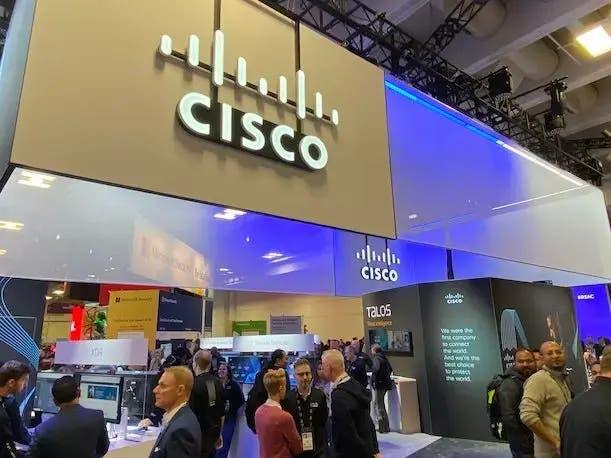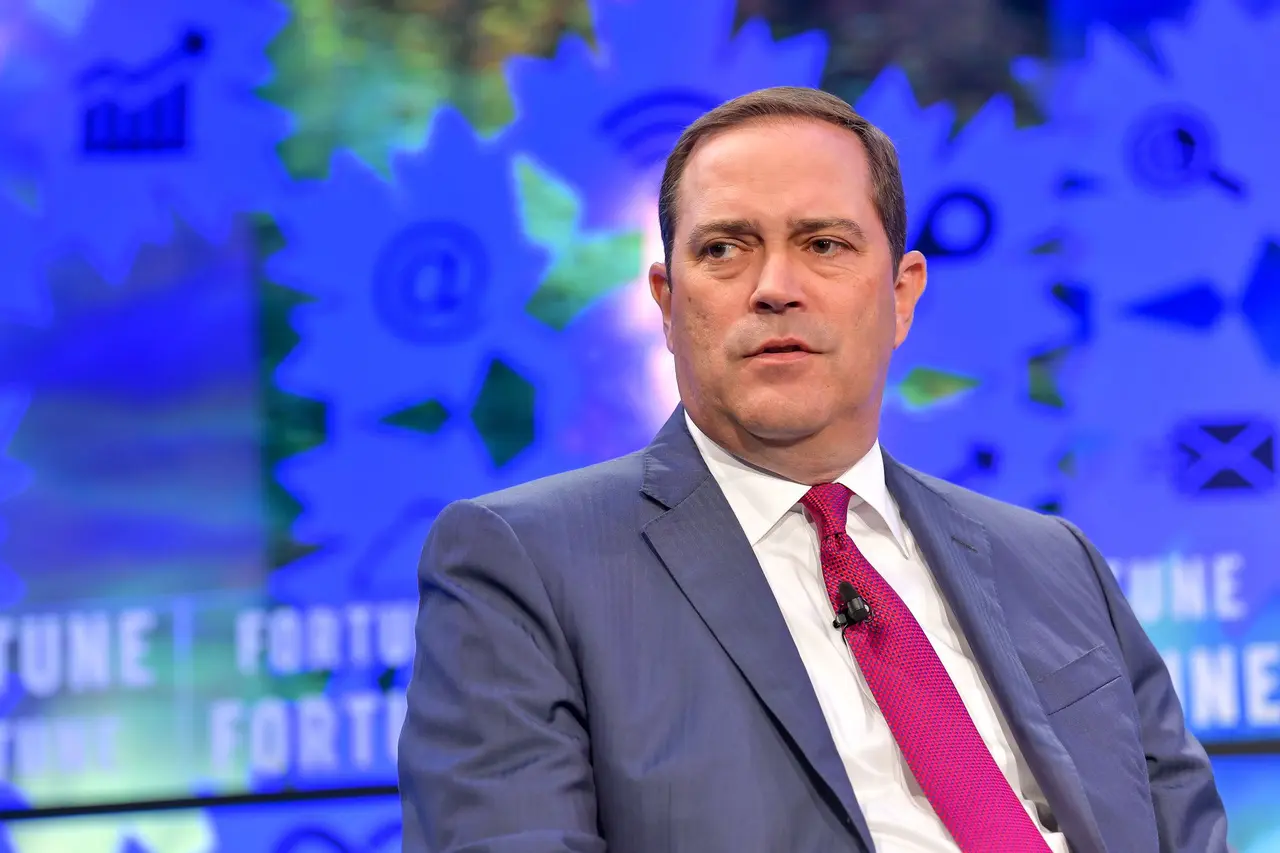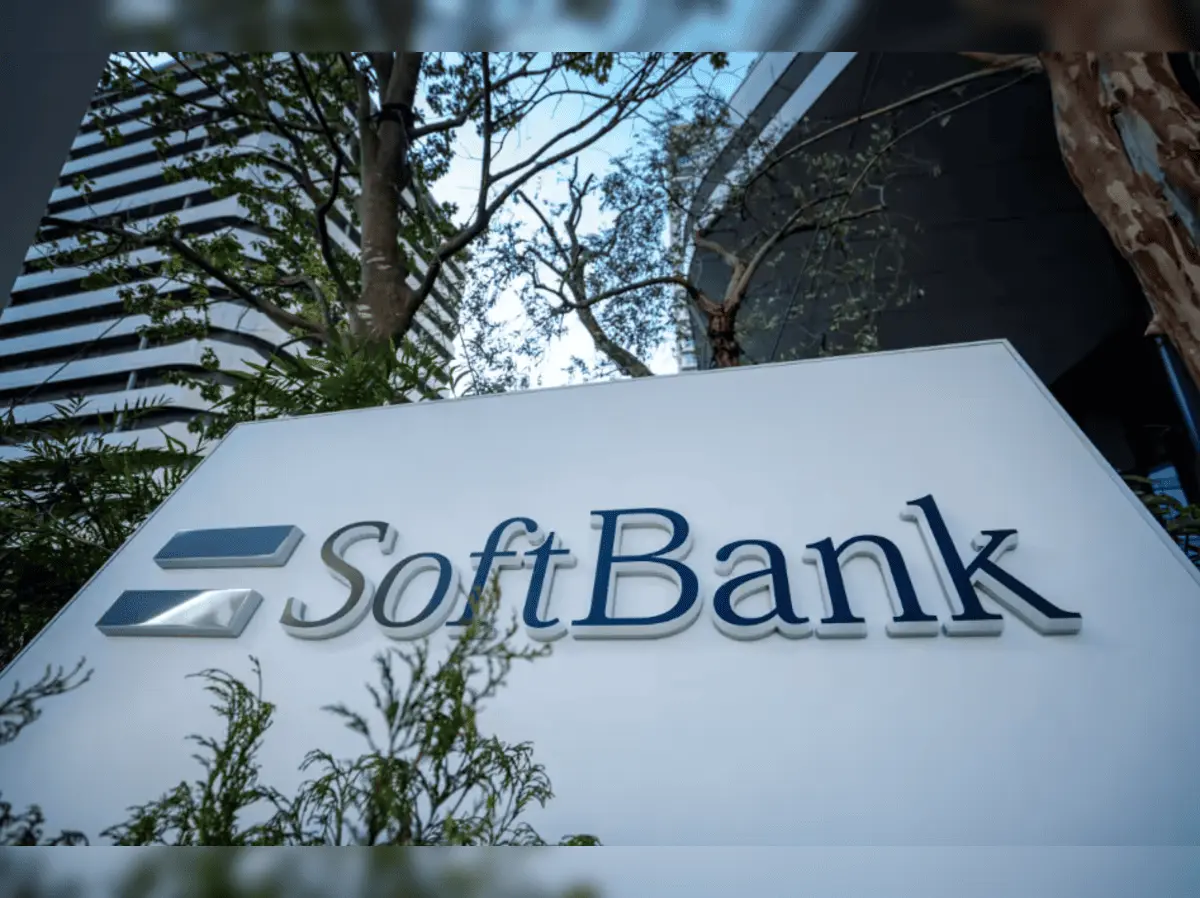Cisco Unveils Unified Edge Platform to Bring AI Processing Power to the Network Edge
6 Sources
6 Sources
[1]
Cisco launches devices and software aimed at bringing AI to the edge - SiliconANGLE
Cisco launches devices and software aimed at bringing AI to the edge Cisco Systems Inc. today unveiled a broad set of new products and platform updates designed to bring artificial intelligence to the network edge and modernize how enterprises deploy and secure distributed workloads. The announcements, made at Cisco's annual Partner Summit, include the debut of the Cisco Unified Edge platform, enhancements to its secure enterprise network architecture, and updates to its managed services portfolio for AI and cybersecurity. Cisco said it's seeking to position itself as the critical infrastructure layer for the AI era, enabling real-time inferencing, agentic AI workloads and distributed automation at scale. "AI is moving faster than their infrastructure can support," said Tim Coogan, Cisco's senior vice president of global partner sales. "It is moving in a way that's making data strategies that were in place 12 or 18 months ago insufficient in today's environment." Headlining the announcements is Cisco Unified Edge, a converged hardware platform that combines computing, networking and storage into a modular system purpose-built for real-time AI inferencing at the edge. Targeted at environments like retail, healthcare and manufacturing, Unified Edge is designed to run both traditional and agentic AI workloads close to where data is generated. "We set out to get away from all these cables, multiple management planes and complexity that happens at the edge," said Jeremy Foster, senior vice president and general manager of Cisco Compute. Unified Edge (pictured) comes in a modular 19-inch chassis supporting central processing units and graphics processing units, up to 120 terabytes of storage, redundant power and cooling and integrated 25-gigabit networking. The platform supports edge deployments in wall-mounted or rack-mounted formats and includes embedded security features like tamper-proof bezels, confidential computing and zero-trust access. Confidential computing isolates sensitive workloads and protects with additional added security layers. Cisco also updated its Intersight management platform to handle thousands of edge sites with centralized visibility. The platform is designed to be "the easiest system to operate in x86 edge computing, period," Foster said. Enhancements to Cisco's AI-ready secure network architecture include unified cloud management, AI-driven automation tools and new purpose-built devices for enterprise campuses and branches. Cisco said the updates enable simplified network deployment, observability and policy enforcement across hybrid environments. Customers can now access a "global overview" of Catalyst and Meraki networks through a single Meraki dashboard. New cloud-managed fabrics and agentic workflows use natural language prompts and pre-validated designs to automate complex tasks. "We are completing our journey of cloud management across all of our iOS XE switches," said Aruna Ravichandran, senior vice president and chief marketing officer for AI, networking and collaboration at Cisco. "Every customer, no matter their size, can deploy cloud fabric using the Meraki dashboard." Cisco iOS, its Internetwork Operating System, is a network OS used on Cisco routers and switches to integrate and manage network functions. The company's new 8200 and 8400 Series Secure Routers and Wi-Fi 7 access points will be available this quarter, delivering low latency and intelligent traffic handling for high-bandwidth AI workloads. With partners in the spotlight at this week's conference, Cisco introduced several security enhancement aimed at managed service providers. New multi-tenant capabilities within its Security Cloud Control platform allow MSPs to manage Hybrid Mesh Firewall deployments and other security services for multiple customers from a single console. The Hybrid Mesh Firewall combines on-box threat inspection, integrated software-defined wide area networking and AI-based segmentation across data centers, cloud and edge environments. Cisco's Secure Firewall 200 and 6100 Series support the functionality, and the new Threat Defense 7.7 firewall software can detect and block up to 100% of threats in NetSecOPEN tests, Cisco claimed. "We are baking hybrid mesh firewalling capabilities into the fabric of the network through smart switches," said Ambika Kapure, senior vice president of product success at Cisco. "We can also manage third-party firewalls and do workload protection via agents like eBPF that allow us to get down to the process level." Extended Berkeley Packet Filter runs sandboxed programs in the Linux kernel without changing kernel source code or loading a kernel module, thereby preventing tampering. Security Cloud Control now supports granular role-based access control, streamlined licensing, and standardized application programming interfaces for onboarding and provisioning. Cisco says the enhancements enable more profitable growth for security-focused MSPs. In a briefing with journalists, Cisco executives emphasized that their focus is on supporting customers through what they described as the "agentic AI era," where AI agents carry out complex tasks autonomously. That shift, they said, creates significant demands on bandwidth, power, and computing capacity across highly distributed infrastructures. "Almost every customer we're talking to is reimagining and rethinking decisions that they've made in IT over the last several years," said Jeff Schultz, Cisco's senior vice president of portfolio strategy. Cisco's approach is centered on infrastructure modernization, secure connectivity and digital resilience. To advance that strategy, Cisco is embedding AI observability into its network and security stack, partnering with independent software vendors and integrating telemetry and threat defense data into its Splunk data collection platform. We are making sure that Splunk is embedded in our AI-ready data center offering," Schultz said. Cisco Unified Edge and the new secure routers, wireless access points and cloud-managed fabric capabilities will be generally available by the end of the year. The updates to Security Cloud Control and managed services are available today.
[2]
Cisco launches localised computing device to handle AI workflows
Cisco Systems launched a computing device on Monday that will run artificial intelligence workloads at local entities such as retail stores, factory floors and healthcare facilities, speeding up their AI data processing capabilities. It features an Intel chip and has seen an early adopter in Verizon. It is expected to be generally available by the end of the year. Cisco Systems launched a computing device on Monday that will run artificial intelligence workloads at local entities such as retail stores, factory floors and healthcare facilities, speeding up their AI data processing capabilities. The new platform, named "Cisco Unified Edge," is an attempt to bring AI infrastructure closer to where the data is created - on shop and factory floors, for example - as traditional data centers become overburdened with complex commands, especially as agentic and reasoning models drive up network traffic. The Cisco platform features an Intel chip and has seen an early adopter in Verizon. It is expected to be generally available by the end of the year. The Cisco platform features an Intel chip and has seen an early adopter in Verizon. It is expected to be generally available by the end of the year. Tech firms have committed tens of billions of dollars to expand their data center operations to accommodate the soaring use of AI models. "As AI agents and experiences proliferate, they will naturally emerge closer to where customers interact and decisions are made - the branch office, retail store, factory floor, stadium, and more," said Cisco's Chief Product Officer Jeetu Patel. (Reporting by Zaheer Kachwala in Bengaluru; Editing by Pooja Desai)
[3]
Cisco Stock Climbs After Launching New AI Platform - Cisco Systems (NASDAQ:CSCO)
Cisco Systems, Inc (NASDAQ:CSCO) unveiled a series of artificial intelligence-driven innovations. Among the updates are the company's Cisco Unified Edge platform, expanded AI-ready network architecture, and upgraded Security Cloud Control. Together, these offerings help businesses strengthen cybersecurity and accelerate real-time decision-making as AI workloads scale across industries like healthcare, and manufacturing. Also Read: Cisco Takes On Broadcom With Its Most Powerful Router Yet The platform unifies compute, networking, storage, and security at the data source, enabling real-time AI inference and agentic workloads essential for scaling AI from the core to the edge. Cisco designed Unified Edge to overcome infrastructure bottlenecks that stall over half of AI pilots. It offers a decentralized architecture capable of managing high-bandwidth, low-latency, and data-intensive AI demands. The system supports real-time operations, enabling data creation and reducing reliance on centralized data centers. The full-stack platform features modular Central Processing Unit and Graphics Processing Unit configurations. It also includes zero-touch deployment, centralized management through Cisco Intersight, and built-in zero-trust security. Cisco's partners include Intel Corp (NASDAQ:INTC), Verizon Communications Inc (NYSE:VZ), and Rockwell Automation Inc (NYSE:ROK). This positioned Unified Edge to help enterprises make more secure decisions at scale. The platform is available for order now and will be generally available by year-end. Cisco expanded its AI-ready secure network architecture with new innovations that modernize campus, branch, and industrial networks for the AI era. The company designed these solutions to simplify operations, scale with business needs, and strengthen security -- key factors in enabling enterprise AI. Cisco's systems can configure and secure highly distributed networks in minutes, supporting the high-bandwidth, low-latency demands of AI workloads moving to the edge. Cisco introduced a major platform upgrade to help Managed Service Providers (MSPs) deliver security services more efficiently and profitably. The update adds multi-customer management capabilities to Security Cloud Control, Cisco's unified AI-powered management platform. The enhanced console uses AIOps and AgenticOps to centralize management of Cisco's full security portfolio. Price Action: CSCO stock was trading higher by 1.35% to $74.12 at last check Monday. Read Next: Broadcom Rides AI Boom With Custom Chips for Tech Giants Image: Shutterstock CSCOCisco Systems Inc$74.351.70%OverviewINTCIntel Corp$39.78-0.51%ROKRockwell Automation Inc$362.82-1.50%VZVerizon Communications Inc$39.30-1.12%Market News and Data brought to you by Benzinga APIs
[4]
New 'Cisco Unified Edge' Brings Data Center AI Processing Power To The Edge, Execs Say
'Imagine picking an AI cluster and shrinking it down so you could actually put it in every branch office or put it in every location where you needed that kind of processing. Today you bring your data to AI for processing. Tomorrow, you bring AI to your data,' one partner told CRN about the new Cisco Unified Edge platform. With data volumes at the edge on the rise, Cisco has created an integrated, networking, compute, storage and security-packed appliance that will help businesses meet their agentic workloads where they are. Cisco Unified Edge, "not a server, but a platform," according to Cisco, is an integrated compute platform that extends data center power and scale to the edge of IT networks to where real-time applications and AI inferencing data is generated, the company said Monday at Cisco Partner Summit 2025. The modular platform brings together compute, networking, storage and security in a single system for businesses and channel partners to simplify AI workload management. The platform supports third-party vendors such as Nutanix, VMware, and Microsoft, depending on what customers may already have in their environment. [Related: 'Anything Less Than Additive' Is The Opposite Intention Of Cisco 360, Says New Channel Chief Tim Coogan] "There's a lot of goodness that we put inside this chassis. We really spent a lot of time interviewing customers, trying to understand what is happening at [their] locations, so we could make the best possible system. That means, they wanted data center-level redundancy out at the edge to be able to address [new] use cases and to have infrastructure that can last for the next 10 years," Jeremy Foster, senior vice president and general manager of Cisco Compute, told CRN. AI has "massive" implications for IT infrastructure. One of the biggest constraints to AI adoption is the lack of foundational infrastructure needed to support both traditional and AI workloads, said Jeff schultz, senior vice president of portfolio strategy for Cisco's product organization. Many enterprises now need a decentralized network architecture to support their future growth and AI plans. It's a problem that Cisco is attacking "head on" with offerings like Unified Edge, Schultz said. Unified Edge has been further infused with Cisco Intersight, the company's cloud-based platform for data center management. This lets customers extend the same operation and automation model used in the data center all the way to the edge, according to Foster. "Vendors in this space haven't really looked at the edge to [offer] a unified, easy solution for customers to deploy, manage and operate over the next 10 years. Then you throw AI on top of it, and now you have a whole lot more data being generated at the edge [and] a whole lot higher compute requirements," he said. Foster said the offering can help simplify edge operations for a range of diverse industries with multiple locations, such as retail, healthcare, and manufacturing that often suffer from complex IT deployments, limited IT staff, and security fragmentation. Cisco, with Unified Edge, is helping to solve today's physical infrastructure problems with an eye on the future and moving into "the world of AI," he said. "There's a slot in the front that will allow you to put things like NVIDIA GPUs into the system. So for customers who are in healthcare or retail, where they're doing things like using computer vision to try to analyze what's going on at those locations, those are the type of use cases we want to help unlock for customers," he said. For partners, the opportunities around Unified Edge are "right now" as many customers are uncertain about what they should be doing with edge computing and how changes from their ISVs are going to impact edge requirements over the next five to 10 years, Foster said. "Cisco Unified Edge for the channel partners represents an opportunity to put a system in place with customers that can deliver what they need today as well as what they're going to want or need tomorrow," he said. The AI conversation to date has been largely centered around sending data to and from a centralized data center. But the future of AI, especially use cases such as robotics and computer vision, will require a highly distributed architecture, said Neil Anderson, vice president and CTO of cloud, infrastructure and AI solutions for World Wide Technology, a Maryland Heights, Mo.-based Cisco Gold partner. "Where AI is moving, [the use cases] need real time. You're going to need edge AI. Today, it's very centralized. It's a nice, tidy Nvidia cluster sitting in a data center," he said. Cisco Unified Edge, however, is a "complete" platform for edge AI processing, Anderson said. "Imagine picking an AI cluster and shrinking it down so you could actually put it in every branch office or put it in every location where you needed that kind of processing. Today you bring your data to AI for processing. Tomorrow, you bring AI to your data, wherever that is, [like] out in manufacturing, or out in branch offices," he said. By 2027, 75 percent of enterprise data will be created and processed at the edge, according to recent data from Cisco. The Cisco Unified Edge platform is orderable now and will be shipping in December, Foster said.
[5]
Cisco Launches Unified Edge Platform for AI Workloads
Cisco Systems launched Cisco Unified Edge, an integrated computing platform designed to run artificial-intelligence workloads closer to where data is generated. The system combines computing, networking, storage and security in a single unit, enabling companies to perform AI inferencing and agentic workloads in factories, retail stores and healthcare facilities, rather than relying solely on centralized data centers, the company said. Cisco said the platform allows faster decision-making and reduces the need to transfer large volumes of data. "As AI agents and experiences proliferate, they will naturally emerge closer to where customers interact and decisions are made," Chief Product Officer Jeetu Patel said. Unified Edge supports both CPU and GPU configurations and integrates with Cisco's Intersight management software, simplifying scaling, troubleshooting and upgrades without on-site specialists, the company added. The system is available to order now and is expected to reach general availability by the end of the year.
[6]
Cisco launches localized computing device to handle AI workflows
(Reuters) -Cisco Systems launched a computing device on Monday that will run artificial intelligence workloads at local entities such as retail stores, factory floors and healthcare facilities, speeding up their AI data processing capabilities. The new platform, named "Cisco Unified Edge," is an attempt to bring AI infrastructure closer to where the data is created - on shop and factory floors, for example - as traditional data centers become overburdened with complex commands, especially as agentic and reasoning models drive up network traffic. The Cisco platform features an Intel chip and has seen an early adopter in Verizon. It is expected to be generally available by the end of the year. Tech firms have committed tens of billions of dollars to expand their data center operations to accommodate the soaring use of AI models. "As AI agents and experiences proliferate, they will naturally emerge closer to where customers interact and decisions are made - the branch office, retail store, factory floor, stadium, and more," said Cisco's Chief Product Officer Jeetu Patel. (Reporting by Zaheer Kachwala in Bengaluru; Editing by Pooja Desai)
Share
Share
Copy Link
Cisco Systems launched its Unified Edge platform, an integrated computing system that combines networking, storage, and security to run AI workloads at local facilities like retail stores and factories. The platform aims to address infrastructure bottlenecks that have stalled over half of AI pilot projects.
Cisco Launches Comprehensive Edge AI Platform
Cisco Systems unveiled its ambitious Unified Edge platform at the company's annual Partner Summit, marking a significant push to bring artificial intelligence processing capabilities directly to the network edge
1
. The integrated computing platform represents Cisco's strategic response to growing infrastructure bottlenecks that have reportedly stalled over half of AI pilot projects across enterprises.
Source: CRN
The Unified Edge platform combines computing, networking, storage, and security into a single modular system specifically designed for real-time AI inferencing at locations like retail stores, factory floors, and healthcare facilities
2
. This approach fundamentally shifts the AI processing paradigm from centralized data centers to distributed edge locations where data is generated.Technical Specifications and Capabilities
The Unified Edge platform features a modular 19-inch chassis that supports both central processing units and graphics processing units, with storage capacity reaching up to 120 terabytes
1
. The system includes redundant power and cooling systems, integrated 25-gigabit networking, and can be deployed in both wall-mounted and rack-mounted configurations.
Source: SiliconANGLE
Security features are embedded throughout the platform, including tamper-proof bezels, confidential computing capabilities, and zero-trust access controls
1
. The confidential computing feature isolates sensitive workloads with additional security layers, addressing critical concerns about AI data protection at edge locations.The platform integrates with Cisco's Intersight management software, enabling centralized visibility and management across thousands of edge sites
1
. Jeremy Foster, Cisco's senior vice president and general manager of Cisco Compute, emphasized the platform's operational simplicity, describing it as "the easiest system to operate in x86 edge computing."Industry Partnerships and Early Adoption
Cisco has secured notable partnerships for the Unified Edge platform, with Intel providing the chip technology and Verizon serving as an early adopter
2
. Additional partners include Rockwell Automation, positioning the platform for industrial applications .The platform supports third-party vendors including Nutanix, VMware, and Microsoft, allowing customers to integrate existing infrastructure investments
4
. This compatibility approach addresses enterprise concerns about vendor lock-in while enabling gradual migration to edge AI architectures.Related Stories
Market Response and Business Impact
Following the announcement, Cisco's stock price climbed 1.35% to $74.12, reflecting investor confidence in the company's AI strategy . The positive market response underscores the perceived importance of edge AI infrastructure in addressing current data center capacity constraints.
Tim Coogan, Cisco's senior vice president of global partner sales, highlighted the urgency driving the platform's development: "AI is moving faster than their infrastructure can support. It is moving in a way that's making data strategies that were in place 12 or 18 months ago insufficient in today's environment"
1
.Broader Platform Enhancements
Beyond the Unified Edge platform, Cisco announced comprehensive updates to its AI-ready secure network architecture, including unified cloud management capabilities and AI-driven automation tools
1
. The company introduced new 8200 and 8400 Series Secure Routers and Wi-Fi 7 access points designed to handle high-bandwidth AI workloads with low latency.For managed service providers, Cisco enhanced its Security Cloud Control platform with multi-tenant capabilities, enabling centralized management of security services across multiple customers
1
. These updates position Cisco as a comprehensive infrastructure provider for the AI era, addressing both technical and operational challenges facing enterprises deploying distributed AI workloads.References
Summarized by
Navi
[5]
Related Stories
Cisco Unveils New AI-Ready Data Center Infrastructure Solutions
30 Oct 2024•Technology

Cisco Systems Surges on AI Infrastructure Boom with Record Orders and Strategic Partnerships
13 Nov 2025•Business and Economy

Cisco Sees Strong AI Momentum, Expects Over $1 Billion in AI Orders for Fiscal 2025
14 Nov 2024•Business and Economy

Recent Highlights
1
Google launches Gemini 3 Flash as default AI model, delivering speed with Pro-grade reasoning
Technology

2
OpenAI launches GPT Image 1.5 as AI image generator war with Google intensifies
Technology

3
OpenAI launches ChatGPT app store, opening doors for third-party developers to build AI-powered apps
Technology





